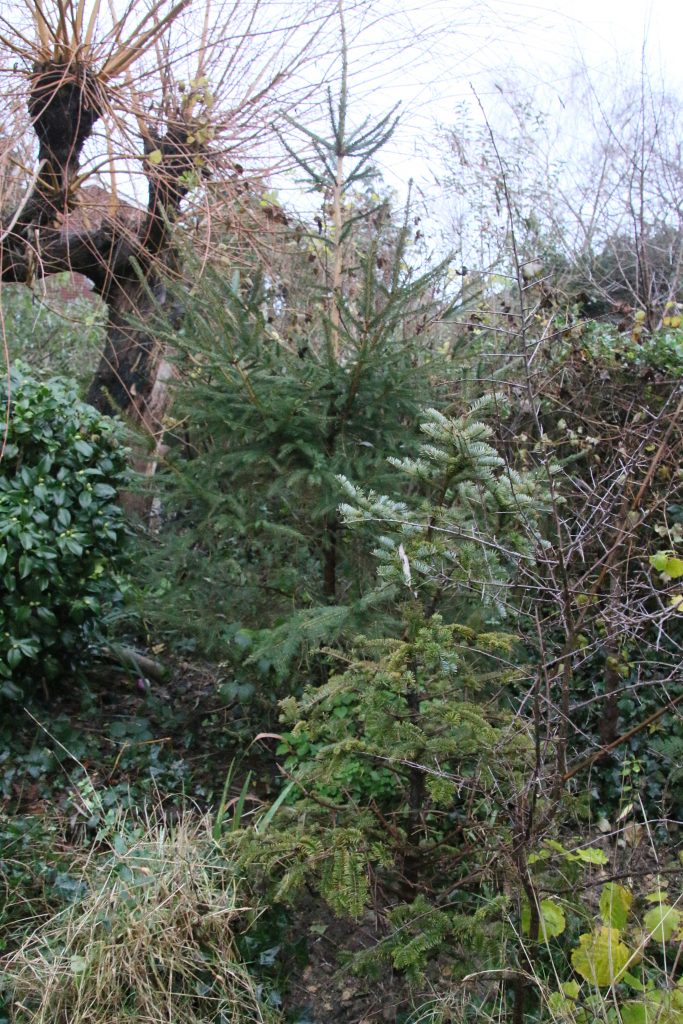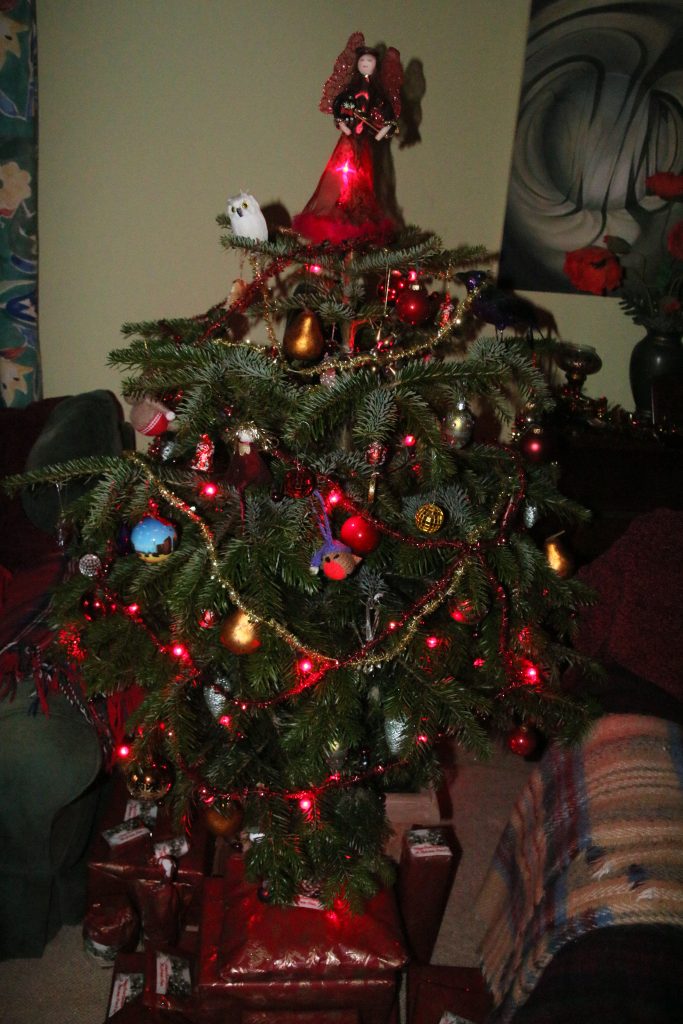
There’s been a bit of discussion recently about Christmas trees. It’s the season for it. But this year, the debates have been around sustainability, and whether it’s better to get a real tree, which you’re cutting down and chucking away, or an artificial tree, that’s (probably) made from plastic derived from fossil fuels.
When put on the spot with the ‘what kind of tree do you have’ question, I described what I did. They suggested I put it on the blog. So here it is.
We always buy a pot-grown tree. But not just any pot-grown tree. You have to get it from a reputable supplier. I have seen several garden centres this year selling trees as ‘pot-grown’ when they’re not, they’re field-grown, then dug up and shoved in a pot. If you get one of those, you might be lucky and get it to survive, but it’s unlikely. It will have had most of its root chopped off to get it onto the pot, and the trauma of that coupled with bringing it indoors for a month means it’s unlikely to survive. You can easily tell by wobbling it around. If it’s pot-grown it will be tight in its pot, it won’t move. If it’s field grown it will wobble around in the pot, and will pull out easily if you want to demonstrate your disgust at the misrepresentation.
Also, you need to consider the tree species. In my experience, Nordman Fir seem to survive the indoor treatment best. A proper, pot-grown tree has in effect been ‘bonsaied’, and the root will be packed into the pot with very little soil left. So pot it up into a bigger pot as soon as you get it home, packing it in tight with good quality compost. The pot needs to be big enough to prevent the tree from falling over, but not so big tat it makes the potted tree too heavy, bearing in mind it will get bigger and heavier over the years. Water it thoroughly before you bring it indoors – then leave it to drain overnight to stop it dribbling mud all over your front room carpet. Don’t use a terracotta pot, it’ll make the whole thing far too heavy. In this case, put up with plastic, which you can reuse many times – our fake terracotta plastic pot has lasted a good 20 years. You’ll need to stand it in a big pot saucer, as it will need regular watering (it will need a lot of water indoors). Position it away from a radiator, and it’ll be fine and happy.
For a local supplier of pot-grown trees, you can’t beat Catsfield Christmas Tree Farm. Their trees really are pot-grown, and are very good quality and healthy. A 1.2m tree (so it will stand a good 1.5m tall after it’s been potted up) will cost around £50. Double the price of a cut tree, but it should be good for five years or so.
After Christmas is over, find a corner of the garden where you can just leave it to happily grow away till next Christmas. You’ll probably need to wire it to a couple of bamboo canes, pushed into the ground and angled across the tree, to stop it getting blown over. Give it a bit of a feed with a liquid organic fertiliser from time to time, and don’t forget to water it. Choose a place where it can get light all round it – if one side is heavily shaded, it will die back and grow on the light side, so you’ll get a lop-sided tree. It doesn’t need direct sun, just not closely shaded by a fence or other plant.

By next year, you’ll be able to tidy it up a bit and bring it in again. And if you’ve used a decent sized pot, you should be able to keep it going for five years or so – a lot cheaper than a cut tee. Eventually, the tree will get too big for its pot and will start to get scrappy and just not up to the job anymore. If you’ve got the space, plant it out in the garden. You’ll be planting it in winter when the ground is soft, so relatively easy to do. And you can re-use your plastic pot for a new tree.
Now free of its pot, your tree will perk up again and start to grow, shaping up into a very elegant tree. After another five years though, you’ll probably want to cut it down. All species of Christmas tree will grow to 30 metres tall, or more – not really suitable for a suburban garden.
Don’t waste that tree when you cut it down. Pine needles are acidic, so I cut and the branches off, shred them in a garden shredder, then use them as a mulch on the blueberries, but you can use them on any acid-loving shrub. The trunk has all sorts of potential uses around the garden, but can be cut into logs if you’ve got an open fire or log burner (leave them to mature for a year if you’re going to do that) or just leave the trunk in a garden bed somewhere to add interest, where it can provide a home for insects, increase biodiversity, and eventually rot back into the soil.
And that’s it. Money saved, minimal carbon footprint beyond the natural carbon cycle, and one less thing to think about at Christmas. And you can feel comfortably smug when your eco-friends ask you whether you have a Christmas tree.
Enjoy the season, as best you can!
